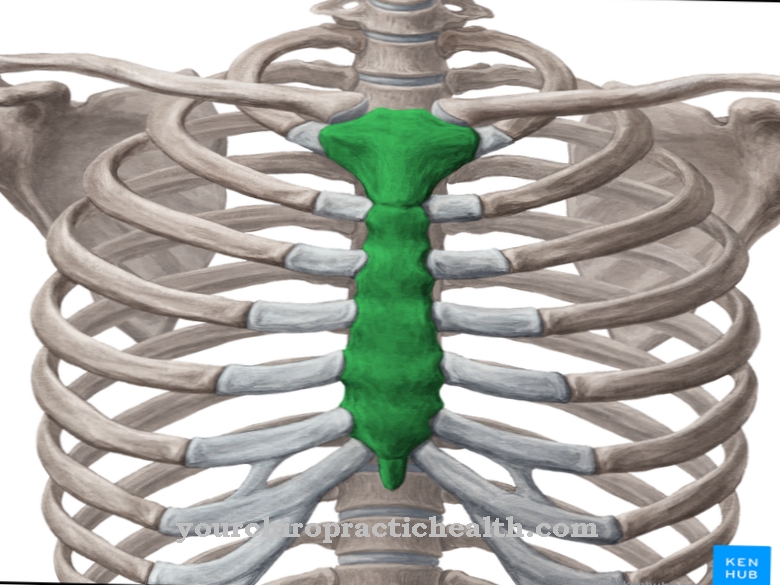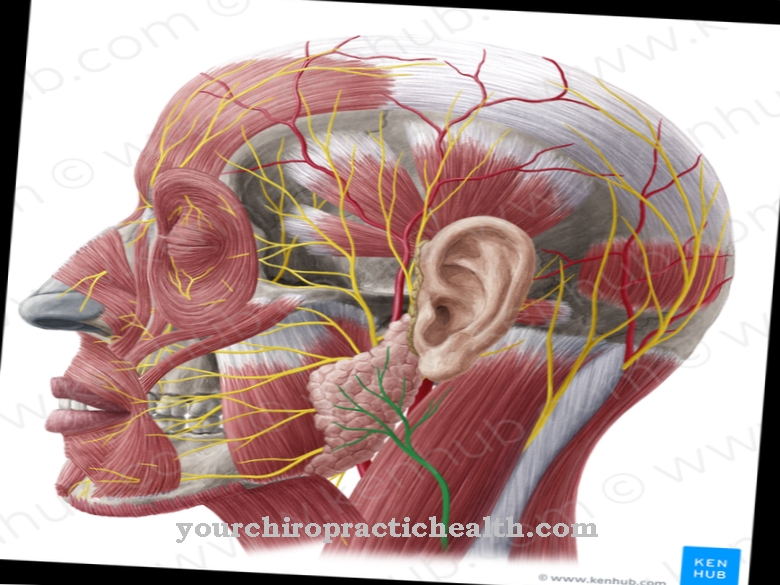The endoplasmic reticulum (HE) is present in every eukaryotic cell with the exception of mature erythrocytes. It is a cell organelle with a variety of functions. Without ER the cell and thus the organism would not be viable.
What is the endoplasmic reticulum?
The endoplasmic reticulum (ER) is a very structure-rich cell organelle with a canal system of cavities. The cavities are surrounded by membranes. In the eukaryotic cell, the ER takes on a variety of tasks. It has storage, detoxification, control or synthesis functions. It is located in the cytoplasm of the cell and is in close contact with the nuclear envelope of the cell nucleus.
Furthermore, a distinction is made between rough and smooth ER. Both forms belong to the endoplasmic reticulum, but have different functions. The rough ER has ribosomes on the surface of the membrane. In contrast, the smooth ER, as the name suggests, is smooth. It has no ribosomes. The term endoplasmic reticulum is made up of three parts. Endo is the Greek word for inside. Plasmatic indicates the cytoplasm and reticulum is the Latin term for network. In other words, the endoplasmic reticulum is a network-like organelle that is located in the cytoplasm of a cell.
Anatomy & structure
The endoplasmic reticulum is a labyrinth of channels, vesicles and sac-like structures (cisterns), all of which are surrounded by a membrane. Because of this, half of all cell membranes are in the ER. The membranes close the lumen (the inside of the ER) from the cytoplasm.
The ER membrane is directly connected to the nuclear envelope of the cell nucleus and forms a unit with it. The ER lumen is thus directly connected to the membrane space between the nuclear envelope, which is referred to as the perinuclear space. The ER is partly smooth and partly rough. The rough ER has ribosomes on its surface, while the smooth ER is ribosome-free. Both forms of ER differ in their functions. The endoplasmic reticulum is not static, but is subject to constant change. So there is a constant lengthening, splitting off and fusion of membrane structures.
These activities are significantly influenced by the cell's cytoskeleton. In plant and animal cells, different proteins play a role in the changes in the endoplasmic reticulum. While in plant cells and yeast it is mainly the F-actin that is decisive, in animal and human cells the ER is mainly influenced by the microtubules. The microtubules are tubular filaments made of proteins that form the basis of the cytoskeleton. During cell division, these proteins ensure that the endoplasmic reticulum is passed on to the daughter cells.
Function & tasks
Many processes for protein synthesis, control, modification or protein transport take place both on and in the endoplasmic reticulum. Furthermore, after cell division it forms new nuclear membrane and constricts it to be passed on. The ER is also an important calcium store in the cell and therefore plays a key role in signal transmission. In the muscle cells in particular, it is responsible for muscle contraction due to its function as a calcium mediator.
There it is also referred to as the sarcoplasmic reticulum. As mentioned earlier, smooth and rough ER have different functions. The smooth ER has no ribosomes. It is responsible for calcium storage, for the carbohydrate metabolism, for the formation of certain lipids such as phospholipids, fatty acids or steroids and for the detoxification reactions inside and outside the liver. The testes and ovaries contain particularly high levels of smooth ER because this is where the steroid hormones testosterone and estrogen are produced. The liver parenchymal cells are also rich in smooth ER.
Excess glucose is stored there in the form of the polymer glucogen. Here the smooth ER is responsible for the renewed splitting of the glucogen (glycogenolysis). The smooth ER contains enzymes in the membrane that are also released outside the liver and can initiate detoxification reactions. These so-called CYPs oxidize exogenous substrates and make them water-soluble. In this way, the toxins' breakdown products can leave the body through the kidneys. The rough ER performs two important functions. It controls both protein synthesis and membrane production via the ribosomes.
Protein chains are bound to the membrane-bound ribosomes and immediately channeled into the lumen of the ER. The proteins formed in the cytosol also initially reach the interior of the ER. There the protein chains are folded, giving them their three-dimensional structure. For membrane production, the membrane of the ER first grows, is split off and transported to other structures of the inner membrane system. The ribosomes of the endoplasmic reticulum form the corresponding membrane proteins.
You can find your medication here
➔ Medicines for muscle weaknessDiseases
Without the endoplasmic reticulum, the organism would not be viable. Many functions of the ER are absolutely vital. Malfunctions of the ER would also lead to the death of the organism. For example, detoxification reactions could no longer take place in the body. The testes and ovaries would be unable to function because sex hormones could no longer be produced.
Muscles and nerves would no longer function without ER because the calcium storage function is no longer available. This means that there is no longer any further stimulus transmission. Cell division would also no longer be possible. This fact means that the ER has to be fully functional in order to keep the organism viable. Any malfunction is fatal. Therefore, no diseases have been described that are directly caused by functional disorders of the endoplasmic reticulum.
























.jpg)



